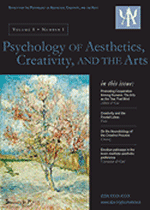
Psychology of Aesthetics Creativity and the Arts
metrics 2024
Unveiling the Psychology Behind Artistic Expression
Introduction
Psychology of Aesthetics, Creativity, and the Arts, published by the Educational Publishing Foundation of the American Psychological Association, stands at the forefront of interdisciplinary research, bridging the fields of psychology and the arts. With an ISSN of 1931-3896 and an E-ISSN of 1931-390X, this journal has earned impressive recognition, achieving a 2023 Q1 ranking in Visual Arts and Performing Arts, and placing within the top quartiles for Applied Psychology and Developmental and Educational Psychology. This demonstrates its pivotal role in advancing knowledge about the psychological underpinnings of creativity and aesthetic experience. As a vital platform for researchers, professionals, and students, it offers insights that enhance our understanding of how aesthetic and creative processes impact human behavior and culture. The journal covers a broad range of topics, from artistic expression to cognitive processes related to creativity, making it an essential resource for those invested in the psychological dimensions of artistic endeavors. Although it is not open access, it remains a highly cited resource in its domains, fostering scholarly dialogue and innovation.
Metrics 2024
 0.93
0.93 2.70
2.70 3.70
3.70 75
75Metrics History
Rank 2024
Scopus
IF (Web Of Science)
JCI (Web Of Science)
Quartile History
Similar Journals
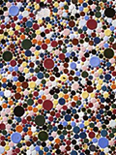
Annual Review of Psychology
Empowering Minds with Interdisciplinary InsightsThe Annual Review of Psychology, published by Annual Reviews, is a prestigious journal dedicated to synthesizing the most significant advancements and research findings in the field of psychology since its inception in 1950. With an ISSN of 0066-4308 and an E-ISSN of 1545-2085, this journal features interdisciplinary reviews that encompass diverse areas of psychology, ensuring comprehensive coverage of both theoretical and practical dimensions of the discipline. Currently ranking in the Q1 category for psychology (miscellaneous) and holding a remarkable rank of #1 out of 216 in General Psychology according to Scopus—placing it in the 99th percentile—this journal continually underscores its importance as a leading resource for researchers, professionals, and students alike. While it operates under a subscription model, it provides critical insights to advance knowledge and foster ongoing dialogue in psychology. The Annual Review of Psychology remains an essential platform for those seeking to stay at the forefront of psychological research and theory.
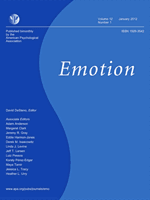
EMOTION
Transforming Perspectives on Emotional HealthEMOTION is a leading peer-reviewed journal published by the American Psychological Association, focusing on the intricate dynamics of human emotions. With its ISSN 1528-3542 and E-ISSN 1931-1516, this esteemed journal has established itself as a pivotal resource in the fields of Psychology and Medicine, proudly ranking in the top quartile (Q1) according to the latest metrics and scoring a remarkable position as #22 out of 216 in the Scopus General Psychology category, placing it in the 90th percentile of its field as of 2023. Spanning from its inception in 2001 to 2024, EMOTION publishes cutting-edge research, theoretical articles, and empirical studies that advance our understanding of emotional processes and their implications for psychological well-being. While EMOTION is not an open-access journal, it remains a crucial platform for researchers, professionals, and students seeking to engage with and contribute to the burgeoning field of emotional psychology.

Religion and the Arts
Connecting Spiritual Narratives with Creative EndeavorsReligion and the Arts is a distinguished scholarly journal published by BRILL, based in the Netherlands, with a dedicated focus on the interdisciplinary exploration of religion and its interplay with various artistic expressions from historical and contemporary perspectives. Established in 1996, this journal serves as a vital platform for researchers, professionals, and students interested in Cultural Studies, History, Religious Studies, and the Visual and Performing Arts. Despite its current classification in the Q4 category across multiple fields, it remains committed to advancing academic discourse and fostering innovative approaches to understanding the complex relationships between spirituality and artistic creation. With its ISSN 1079-9265 and E-ISSN 1568-5292, the journal invites submissions that contribute to enriching this dynamic field, ensuring that a diverse range of voices and perspectives are represented. Although not an Open Access publication, the journal’s content continues to be pivotal for scholarly engagement and is essential reading for those dedicated to the study of art's profound connections with religious traditions.
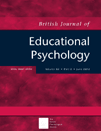
BRITISH JOURNAL OF EDUCATIONAL PSYCHOLOGY
Advancing insights in educational psychology.The British Journal of Educational Psychology (BJEP), published by Wiley, stands as a leading platform in the fields of Developmental and Educational Psychology and Education. Since its inception in 1931, BJEP has consistently delivered high-quality, peer-reviewed research that addresses critical issues and advances knowledge within the educational sphere. With a commendable impact factor and a prominent Q1 ranking in both the Developmental and Educational Psychology categories, the journal boasts an impressive standing among its peers, reflected by its rankings in Scopus (Rank #101 out of 1543 in Social Sciences – Education and Rank #35 out of 360 in Developmental Psychology). Researchers, educators, and students alike will find valuable insights and innovative practices that shape learning and teaching in diverse contexts. Although currently not available as open access, the journal remains dedicated to disseminating pivotal findings that contribute to effective educational psychology practices worldwide. Explore the rich tapestry of knowledge that BJEP offers, crafted from contributions across the globe at the forefront of educational research.

PSYCHOLOGICAL RESEARCH-PSYCHOLOGISCHE FORSCHUNG
Bridging disciplines to enhance understanding of the mind.Psychological Research – Psychologische Forschung is a renowned interdisciplinary journal published by Springer Heidelberg, operating from Germany. As a key publication in the field of psychology, particularly spanning areas such as experimental and cognitive psychology, developmental and educational psychology, and arts and humanities, this journal has made significant contributions to the advancement of psychological science since its inception in 1974. With an impressive impact reflected through its Q1 and Q2 categorizations across various fields, it occupies a prominent position in Scopus rankings, notably ranked #35 in Experimental and Cognitive Psychology. Researchers, professionals, and students alike benefit from its rich repository of original empirical studies, reviews, and methodological advancements. Whether you're seeking to contribute to your field or stay abreast of the latest developments, Psychological Research provides a crucial platform for disseminating innovative psychological knowledge. With a convergence of research years leading to 2024, the journal continues to evolve, maintaining its relevance and excellence within the academic community.
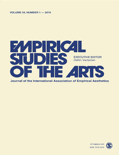
Empirical Studies of the Arts
Unveiling the Impact of Arts on Society Through Empirical EvidenceEmpirical Studies of the Arts is a prominent academic journal published by SAGE Publications Inc, specializing in the interdisciplinary fields of Literature, Music, and Visual Arts and Performing Arts. With an impressive Q1 ranking in multiple categories for 2023, this journal serves as a crucial platform for scholars, researchers, and practitioners engaged in the empirical exploration of arts and their influence on society. Established to foster rigorous inquiry, the journal features peer-reviewed articles that delve into both qualitative and quantitative research methodologies. This commitment to maintaining a high academic standard is evident in its Scopus rankings, which place it in the 99th percentile in Literature, 96th percentile in Visual Arts, and 92nd percentile in Music, making it a vital resource for those seeking to enrich their understanding of arts-related phenomena. While the journal does not currently offer open access options, it remains dedicated to advancing knowledge through comprehensive research, contributing significantly to the ongoing discourse in the arts.

DEVELOPMENTAL PSYCHOLOGY
Illuminating the Path of Lifespan DevelopmentDEVELOPMENTAL PSYCHOLOGY is a prestigious journal published by the American Psychological Association, dedicated to advancing the field of developmental psychology through rigorous research and insightful analysis. With an impact factor that ranks it in the Q1 category for Demography, Developmental and Educational Psychology, and Life-span and Life-course Studies, this journal stands as a leading resource for scholars and practitioners alike. Since its inception in 1969, it has provided a platform for innovative studies that address crucial questions surrounding human growth and development across the lifespan. The journal is recognized for its high-quality contributions, as reflected in its impressive Scopus rankings, positioning it within the top tiers of its field. Although it is not an open-access publication, it remains an essential reading for those invested in understanding the complexities of development across various stages of life. Published quarterly, DEVELOPMENTAL PSYCHOLOGY plays a critical role in shaping future research agendas and informing practical applications in educational and clinical settings.

Neuropsychological Trends
Unveiling the Trends Shaping Neuropsychological ResearchNeuropsychological Trends is a prominent, open-access journal published by LED EDIZIONI UNIV, based in Italy. Since its inception in 2007, the journal has dedicated itself to advancing research in the fields of neuropsychology and cellular neuroscience, catering specifically to the evolving trends shaping these disciplines. With the ISSN 1970-321X and an E-ISSN of 1970-3201, the journal provides a platform for multidisciplinary dialogue and exploration of neuropsychological phenomena. While ranked in the fourth quartile for both Cellular and Molecular Neuroscience and Neuropsychology and Physiological Psychology categories in 2023, the journal encourages innovative research that aims to enhance understanding and treatment of cognitive and psychological conditions. The convergence of years from 2011 to 2024 marks a significant period for contributions that inform clinical practice and theoretical frameworks. As researchers, professionals, and students engage with cutting-edge studies and reviews, Neuropsychological Trends serves as a vital resource for staying informed and fostering collaboration in the neuropsychological community.
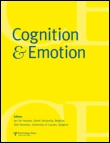
COGNITION & EMOTION
Decoding the Dynamics of Cognition and EmotionCOGNITION & EMOTION is a leading academic journal published by Routledge Journals, Taylor & Francis Ltd, focusing on the dynamic interactions between cognitive processes and emotional responses. Established in 1987, this esteemed journal has made significant contributions to the fields of Arts and Humanities, Developmental and Educational Psychology, and Experimental and Cognitive Psychology, consistently ranking in the top quartile (Q1) across various categories. Housed in the United Kingdom, COGNITION & EMOTION boasts a remarkable impact factor, underscoring its influence and importance in advancing psychological research and theory. While this journal does not offer open access, it remains a vital resource for scholars, professionals, and students seeking to deepen their understanding of emotional and cognitive phenomena. With a commitment to rigorous peer-reviewed research and innovative insights, COGNITION & EMOTION is essential for anyone aiming to stay at the forefront of psychological studies.
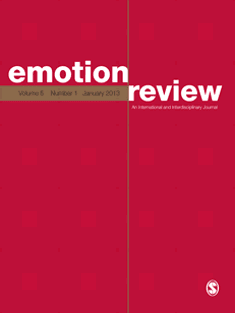
Emotion Review
Pioneering Research in Emotional DynamicsEmotion Review, published by SAGE Publications Inc, is a leading international journal that focuses on the multidisciplinary examination of emotional processes across various fields. Launched in 2009 and maintaining a strong presence in the UK, this journal has rapidly ascended to be classified in the Q1 quartile across several categories, including Arts and Humanities (miscellaneous), Experimental and Cognitive Psychology, and Social Psychology. With its outstanding Scopus rankings—evident from its 93rd percentile in Arts and Humanities and 88th percentile in Psychological disciplines—Emotion Review plays a crucial role in advancing the understanding of emotional phenomena, offering a platform for innovative research and theoretical developments. While this journal does not provide open access options, it remains a vital resource for researchers, professionals, and students eager to explore the complexities of emotions and their impact on human behavior, making it an essential addition to any academic library.